From D-Day to freedom, by train
Travel with us along the Liberation Route Europe and discover some of the most important sites and stories of the Second World War.
May 8, 2020, marks the 75th anniversary of the surrender of the Wehrmacht in Berlin, which brought the Second World War to an end in Europe. As the last remaining witnesses to these dark pages of history pass away, many places of reflection and commemoration are only gaining in significance.
Earlier this year, before the current travel restrictions were introduced, I travelled from Normandy to Berlin with an Interrail pass to mark the momentous occasion, following in the footsteps of the soldiers who landed on the D-Day beaches all the way to the actual place of surrender.
- June 6, 1944: D-Day
- The beaches
- Places of reflection
- History is not always black and white
- The Nuremberg Trials
- The last battle
- Train times
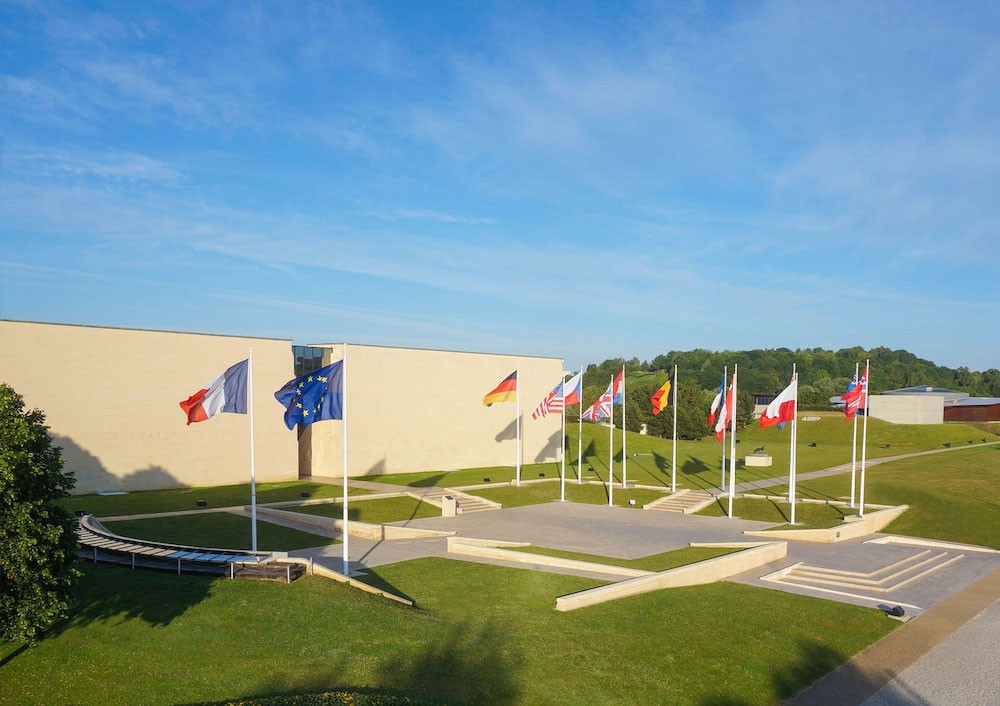
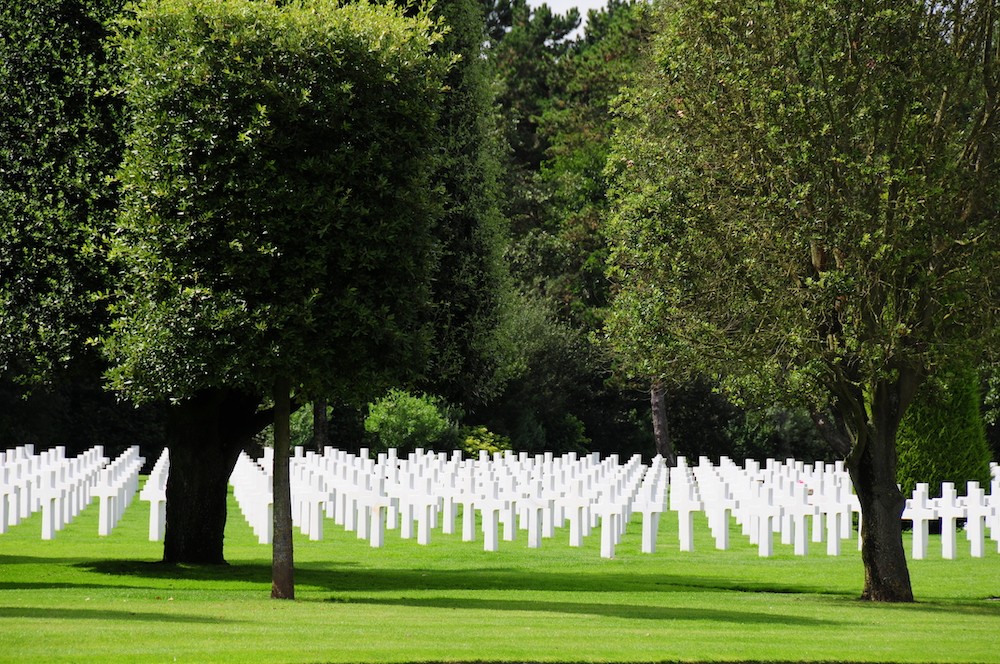
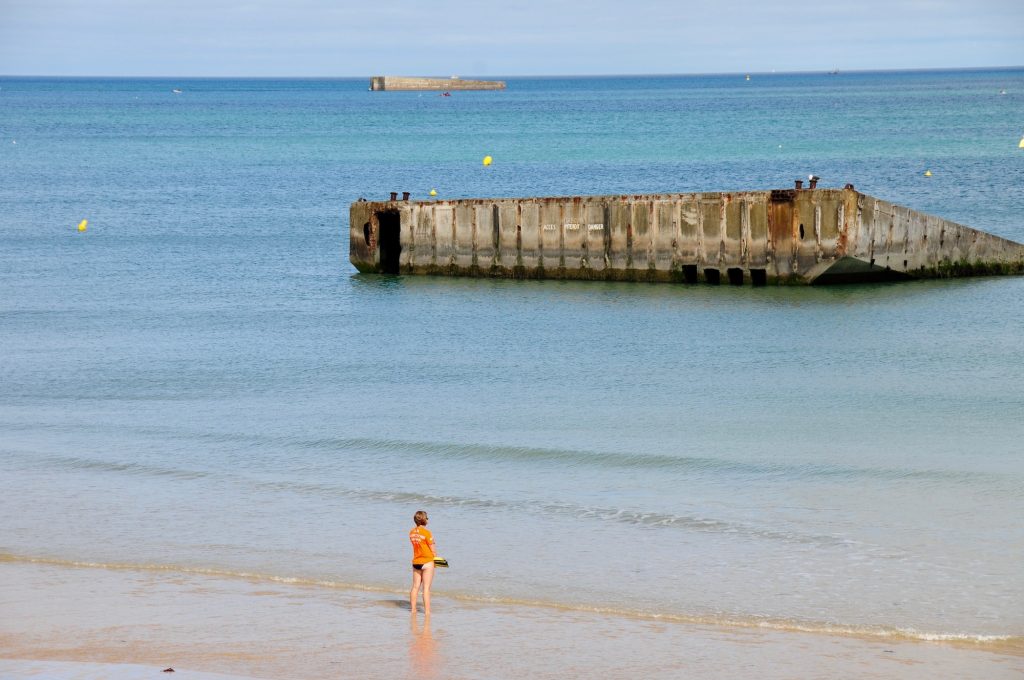
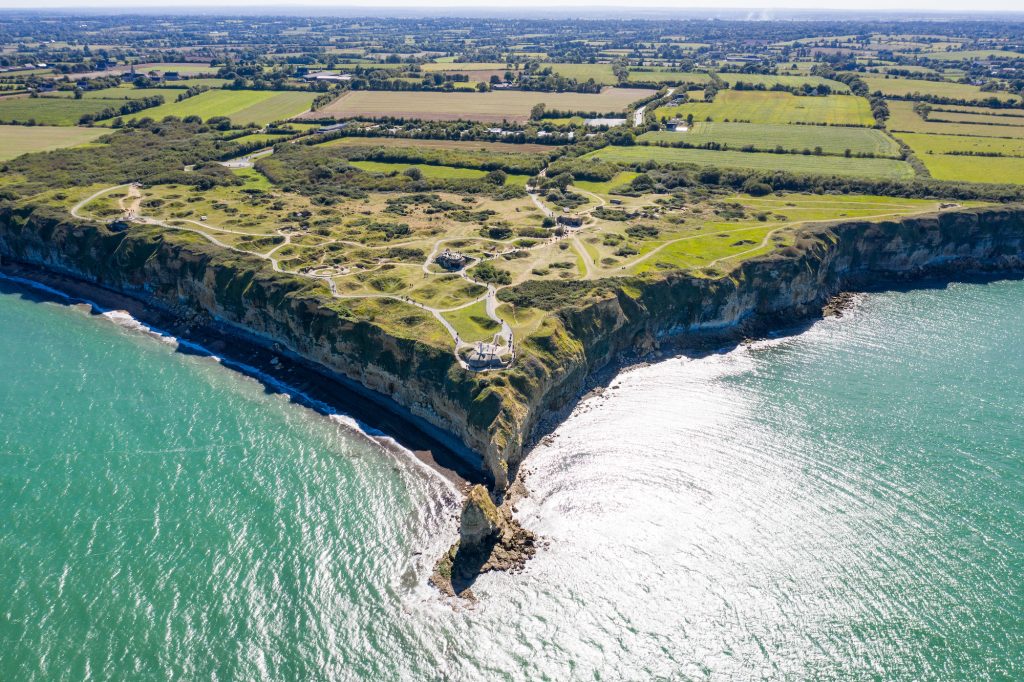
Caen: A memorial to freedom
Taking Caen was one of the Allies’ main objectives during the invasion of Normandy, but the fighting reduced much of the city to rubble. Le Mémorial de Caen, a museum and war memorial, sits on top of a former German command post and is an ideal start to your tour.
Normandy: The landing beaches
Omaha Beach and the American cemetery there are unmissable, as are the crater-riddled cliffs at Pointe du Hoc and the remains of the artificial Mulberry harbour at Arromanches, which was key to the success of the invasion.
Paris: Underground resistance command post
In a disused air raid shelter beneath what is now the Musée de la Liberation, members of the French Resistance would gather to coordinate the liberation of Paris from Nazi occupation.
Brussels: Military history
The Royal Museum of the Armed Forces and Military History in Brussels is a hidden gem with an impressive exhibition about Belgium in WWII. Over 1,000 items are on display, including shoes worn by prisoners on a death march and military leader Hermann Göring’s hat.
Arnhem/Nijmegen: A bridge too far
In 1944, the Allies tried to cross the River Waal as part of Operation Market Garden, which resulted in failure and proved to be ‘a bridge too far’. Today, the ‘Sunset March’ is a daily tribute to the soldiers who fought for the liberation of the Netherlands. The Freedom museum is built on the spot where 8,500 US paratroopers landed.
Nuremberg: The site of justice
In Courtroom 600 of Nuremberg’s Palace of Justice, history was written when a number of high-ranking Nazis stood trial and were forced to answer for their actions.
Berlin: The final battle & surrender
On May 8, 1945, the German High Command signed the act of unconditional surrender in a former officers’ mess in Berlin, marking the end of WWII in Europe. Scattered across the German capital, many places still bear the marks of the final battle.
June 6, 1944: D-Day
Soldiers crouch as their landing boat crashes through a wave. Then the ramp drops and the troops charge into the water under heavy gunfire, giving every ounce of energy just to reach the beach and find cover… Many of us will be familiar with these scenes, etched into our memories in films and shows like Saving Private Ryan and Band of Brothers. And with good reason. This was the starting point on Europe’s route to freedom.
When the fighting reached Caen, over a third of the city ended up in ruins. Today, Le Mémorial de Caen, a war memorial and museum, sits on top of a former German command post. “But you won’t see any military vehicles or weapons here,” explains our guide Maryline Leboire. “The founder of the museum, a former mayor of Caen, wanted to promote peace.”
And that’s still very much the aim of the museum, which is visited by over 400,000 French school children every year. You could easily while away a whole day here looking at different exhibitions and watching archival footage, including the film “D-Day” dedicated to the 90,000 soldiers and 20,000 civilians that died, and “Europe”, which starts with a rather sinister warning about how fragile peace is: “Anyone desiring a quiet life has done badly to be born in the twentieth century.”
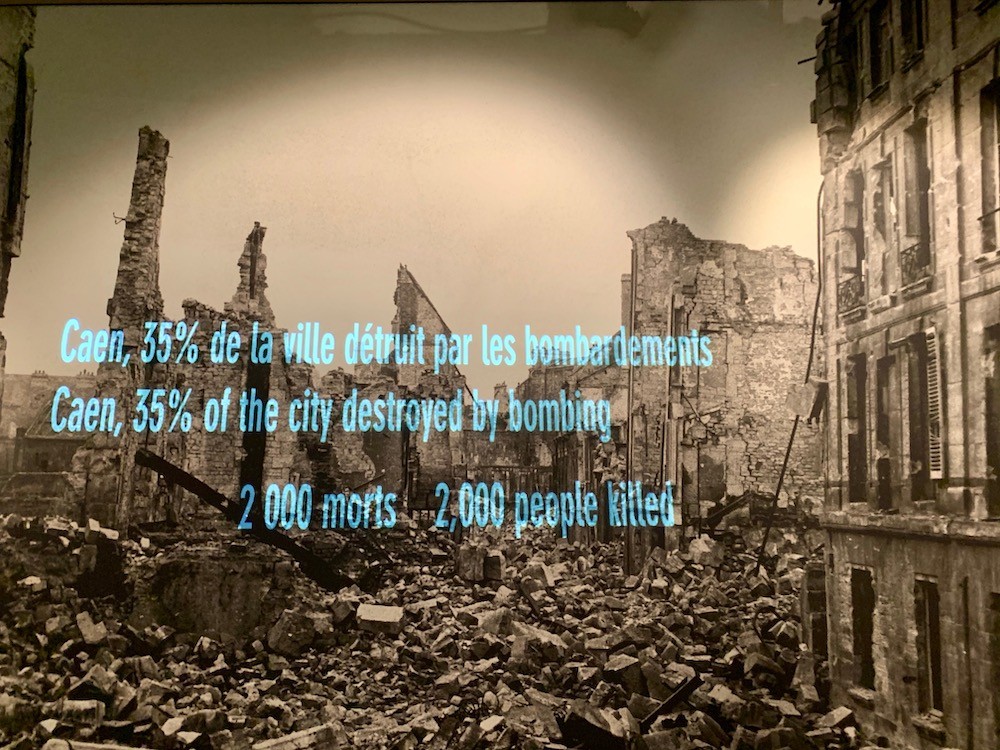
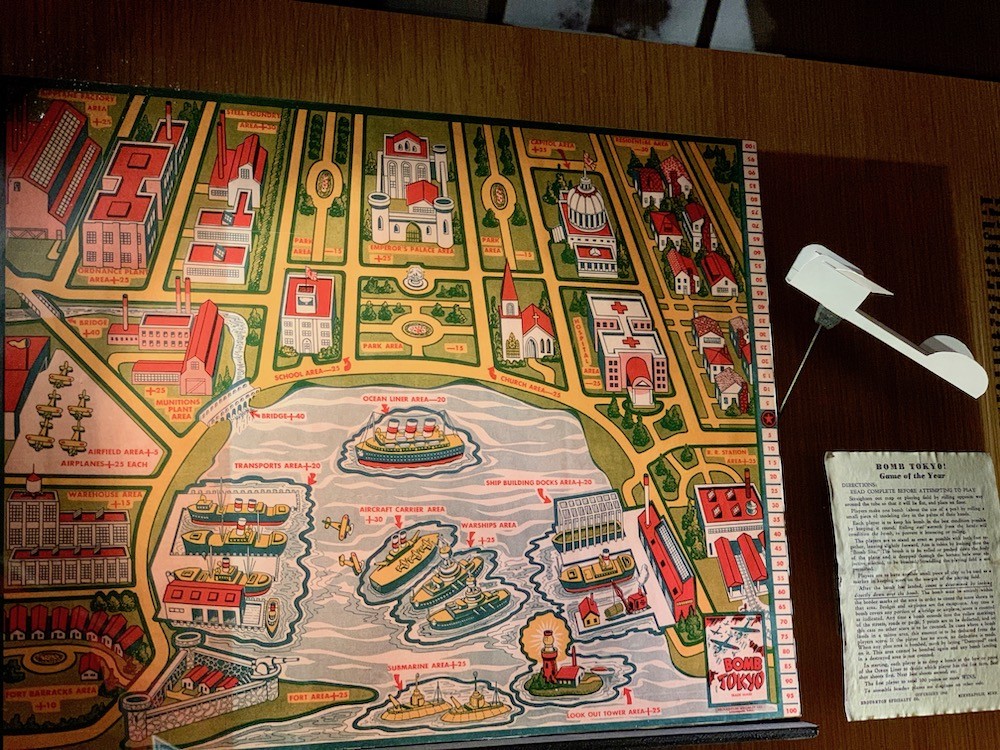
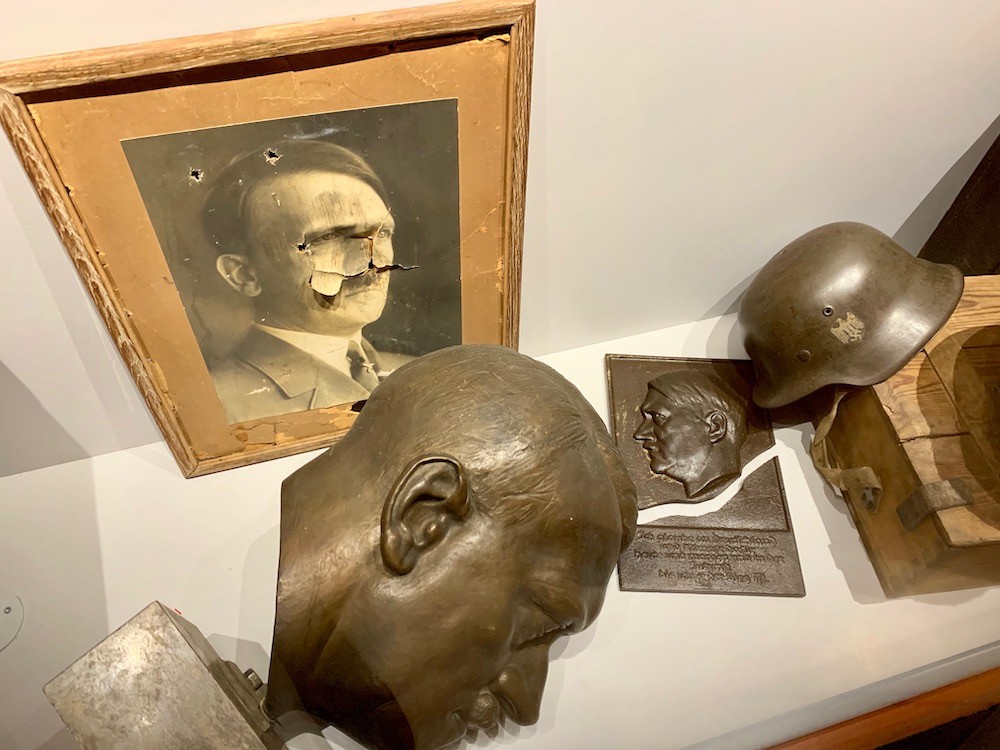
As you drive down the narrow country roads towards the landing beaches, you pass memorials to the invasion as well as other less obvious reminders, like the hedgerows. “The hedgerows actually proved incredibly dangerous for Allied paratroopers,” our guide explains. “Often dropped miles away from their planned zone, the soldiers would have to find their way through the countryside, their line of sight hindered by the hedgerows at every field.”
For this reason, paratroopers were issued with a small device which made a clicking sound when pressed. “If you heard one click, you’d always answer with two as a simple means of telling friend from foe.” There was only problem. The sound of a German gun reloading also made two clicks, an unlucky coincidence that proved fatal for some soldiers. “In the end, they had to use codewords, words that were hard for the Germans to pronounce, like splash and thunder.”
The beaches
Omaha Beach, perhaps the most famous of the five landing beaches, was the scene of some of the fiercest fighting. The Americans did of course take the beach, but paid a heavy price doing so with some 4,700 men killed, wounded or missing from the 35,000 who landed – the highest loss rate of any of the five landing zones. The beach was soon dubbed Bloody Omaha.
The American and German military cemeteries at Omaha Beach and La Cambe respectively are both poignant, moving memorials to the fallen in their own way. The American cemetery is an impressive site that honours the victorious, whereas the German one strikes you in its simplicity. Seeing all the crosses and contemplating just how many lives were lost makes you realise how lucky most of us are never to have experienced war.
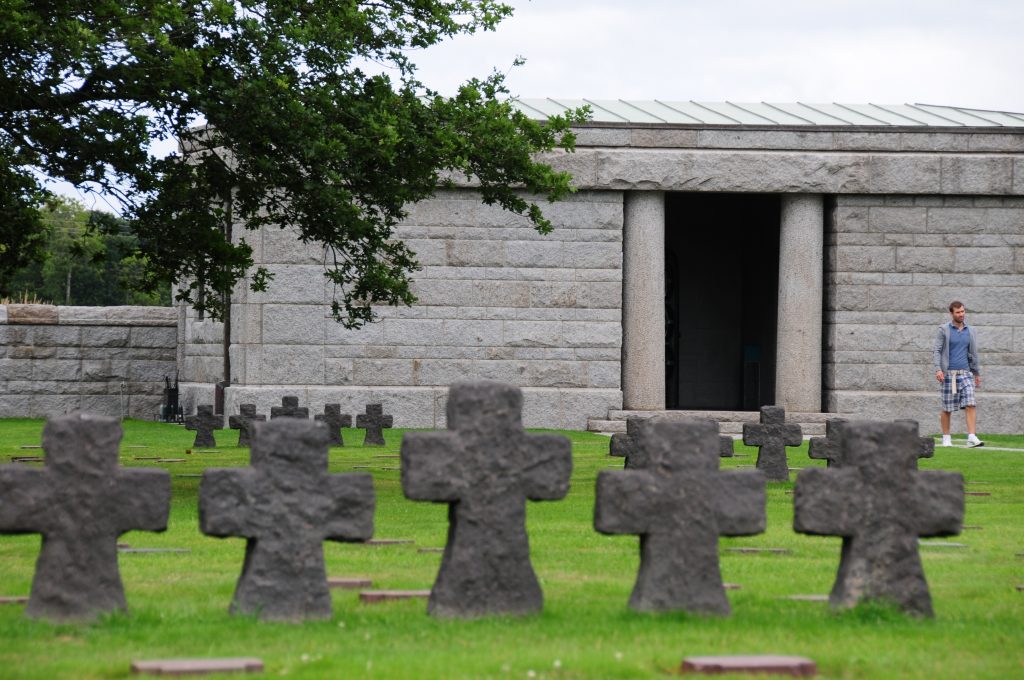
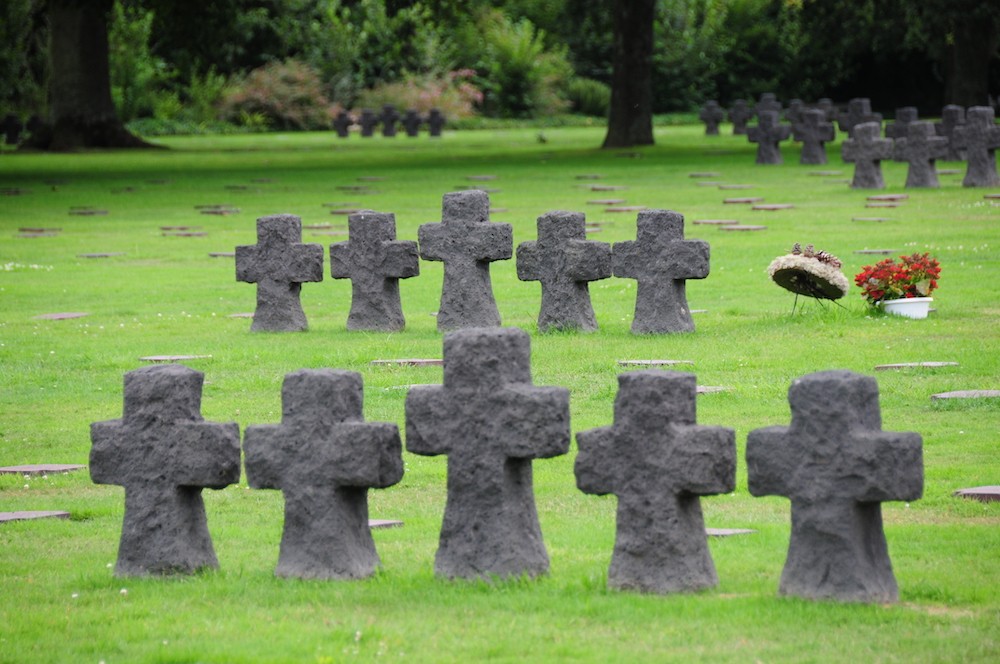

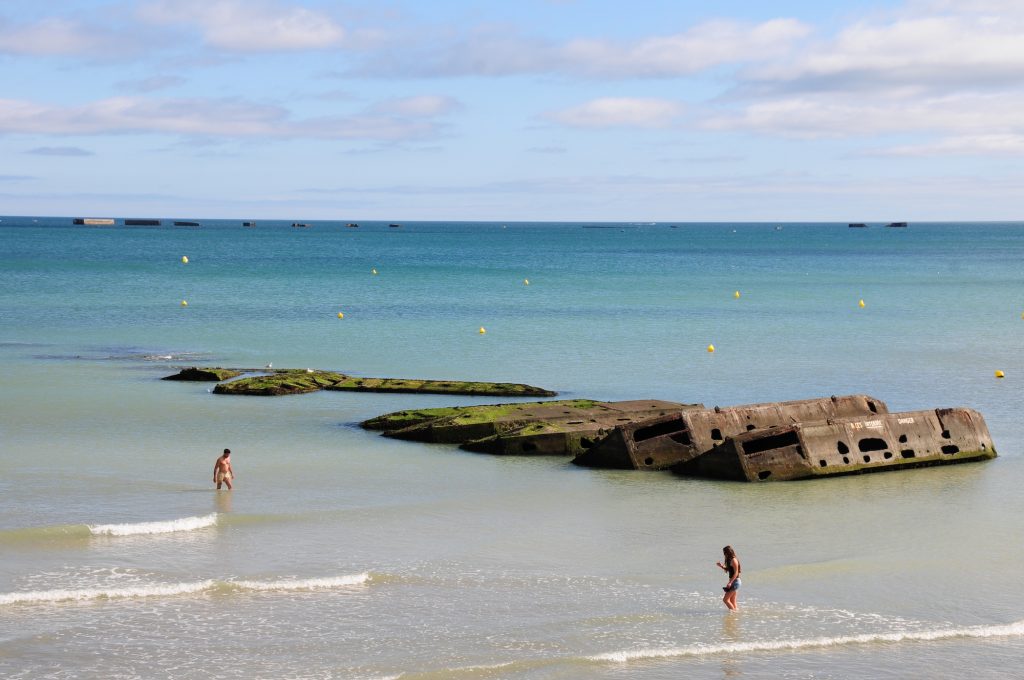
Our guide tells us the stories of the young men who perished, many of them barely adults. A father and son who died, an uncle and nephew, a whole German tank crew killed and buried together. Even the sad story of two American brothers who died in different battles, but were reunited after the war in the cemetery at Omaha Beach.
The Americans also suffered heavy losses at Pointe du Hoc, a steep cliff between Omaha Beach and Utah Beach, where a German battery with 6 guns was installed. The lunar-like, crater-riddled landscape remains today a testament to the ferocity of the fighting seen here 75 years ago.
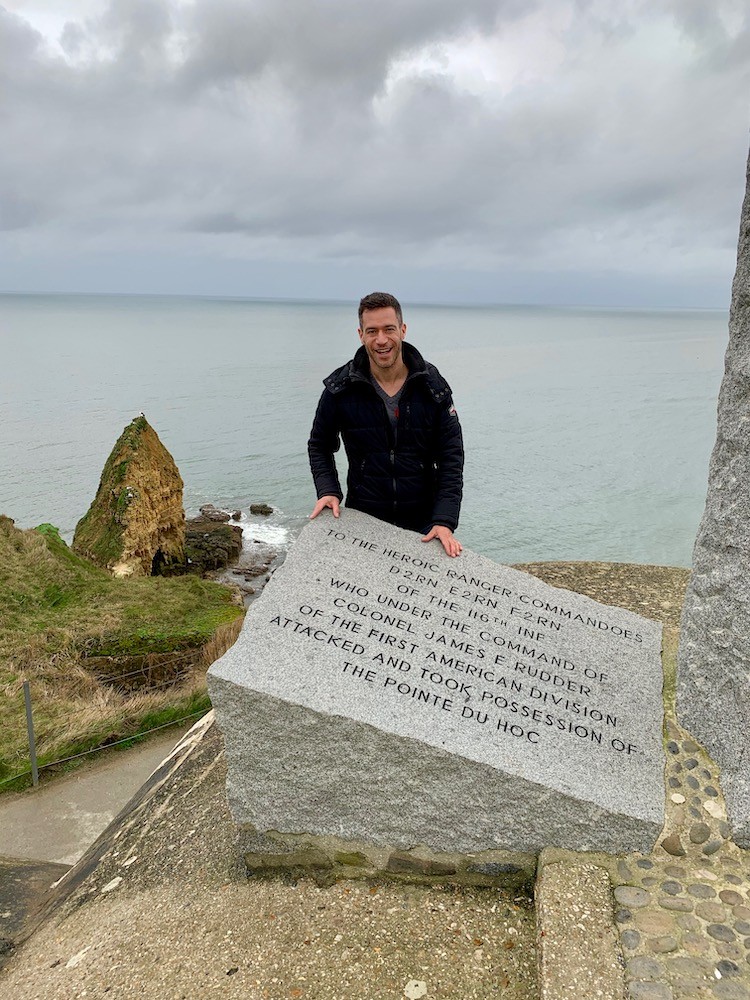
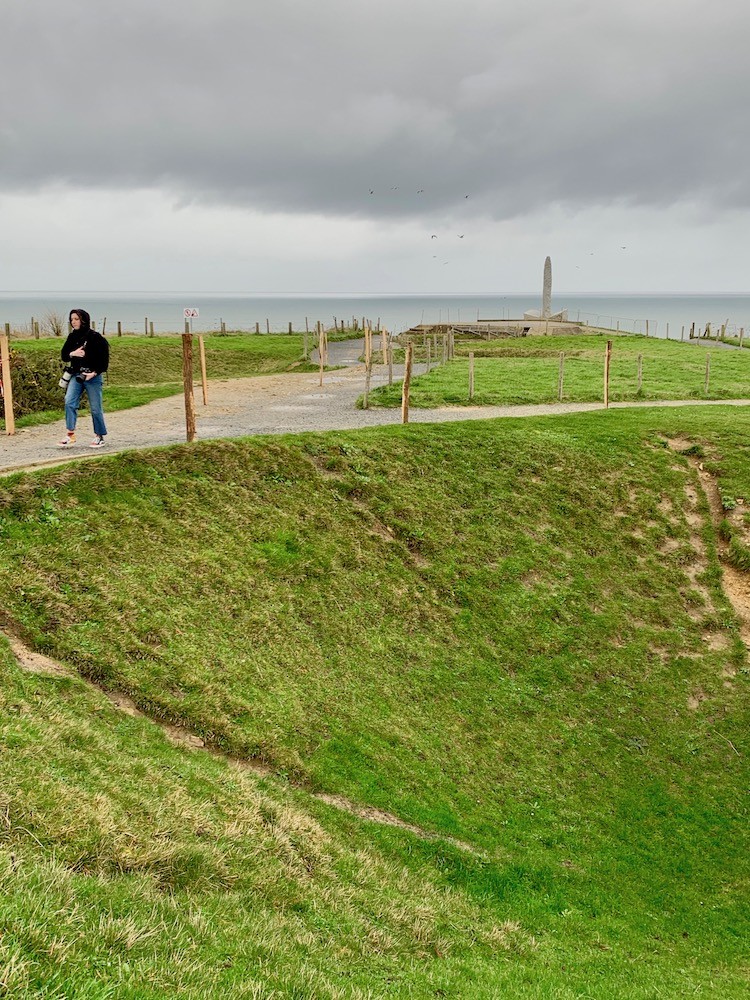

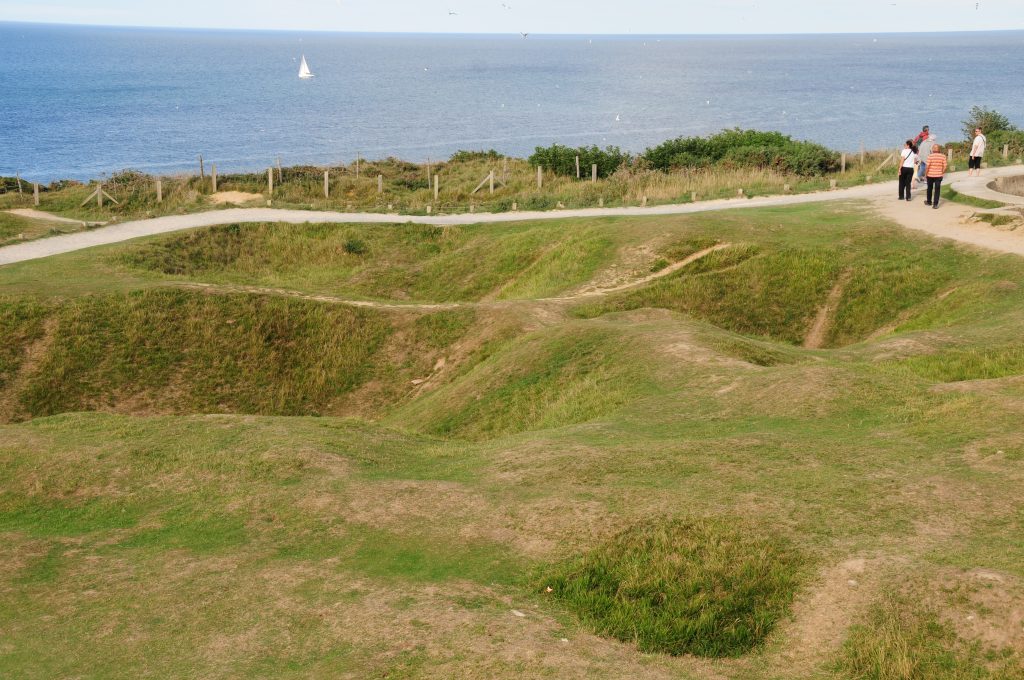
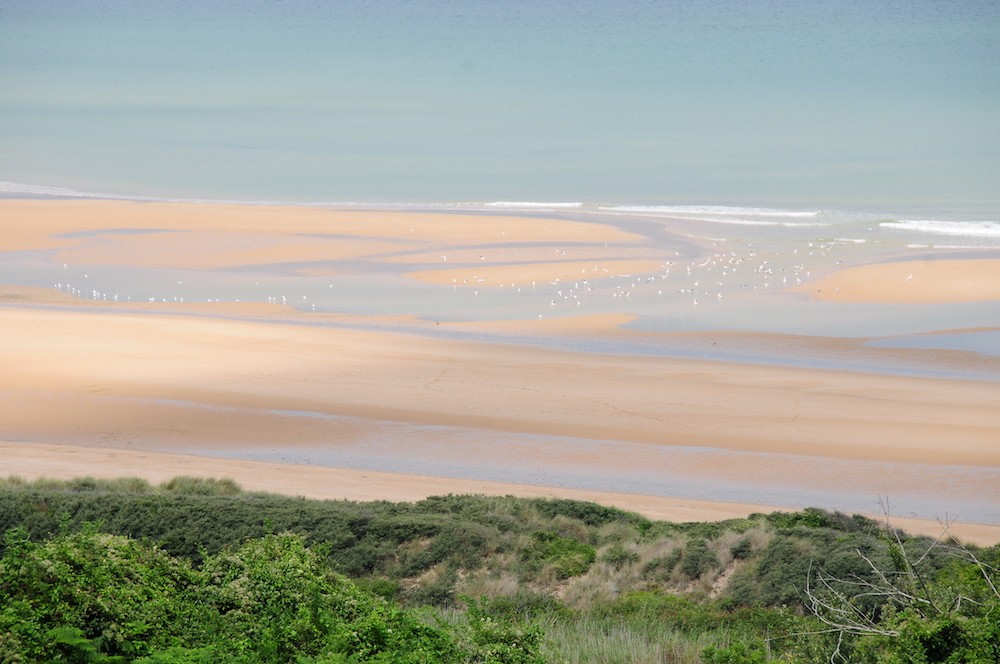

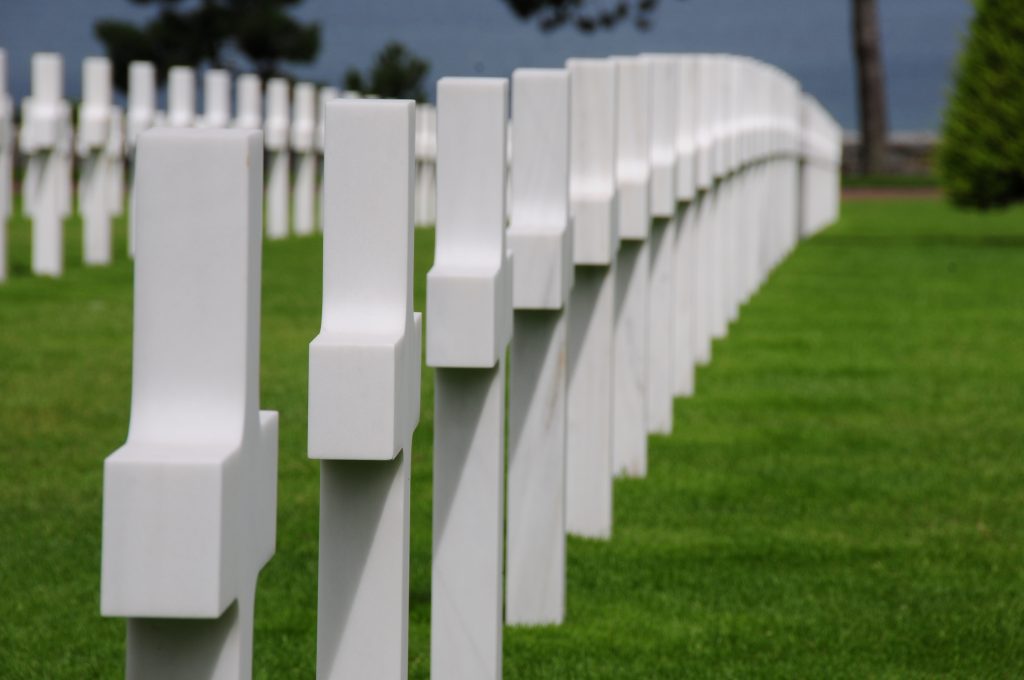
Places of reflection
From Caen, it’s a short two-hour train ride to Paris, where you can now experience the historical struggle for the liberation of the French capital up close in the brand new “Musée de la Liberation”. It was here in a disused bomb shelter, 20 metres beneath what is today the museum, that a leader of the Resistance, Henri Rol-Tanguy, planned the liberation of Paris. With augmented reality goggles, visitors take on the role of a journalist and discover what happened in these rooms in August 1944.
The Royal Museum of the Armed Forces and Military History in Brussels is a hidden gem with an impressive exhibition about Belgium in WWII, opened in 2019. The exhibition goes well beyond traditional military history and zooms in the social, political, economic and human consequences of the war. Over 1,000 items are on display, including shoes worn by prisoners on a death march and military leader Hermann Göring’s hat.
In Nijmegen, the “Sunset March” is a touching daily tribute to the Allied soldiers who fought for the liberation of Holland. A new bridge marks the location where the US 82nd Airborne crossed the River Waal on September 20, 1944, as part of Operation Market Garden – one of the largest aerial operations in history. 48 Allied soldiers died here. On the bridge, 48 pairs of street lamps commemorate the fallen by slowly lighting up in pairs at sunset.
At the Freedom Museum in Groesbeek, a Dutch town near the German border, the message is clear: there is never only one side to a story. The museum, built on the spot where 8,500 US paratroopers landed in 1944, encourages visitors to think critically and to develop a rounded understanding of the events that took place during the war.
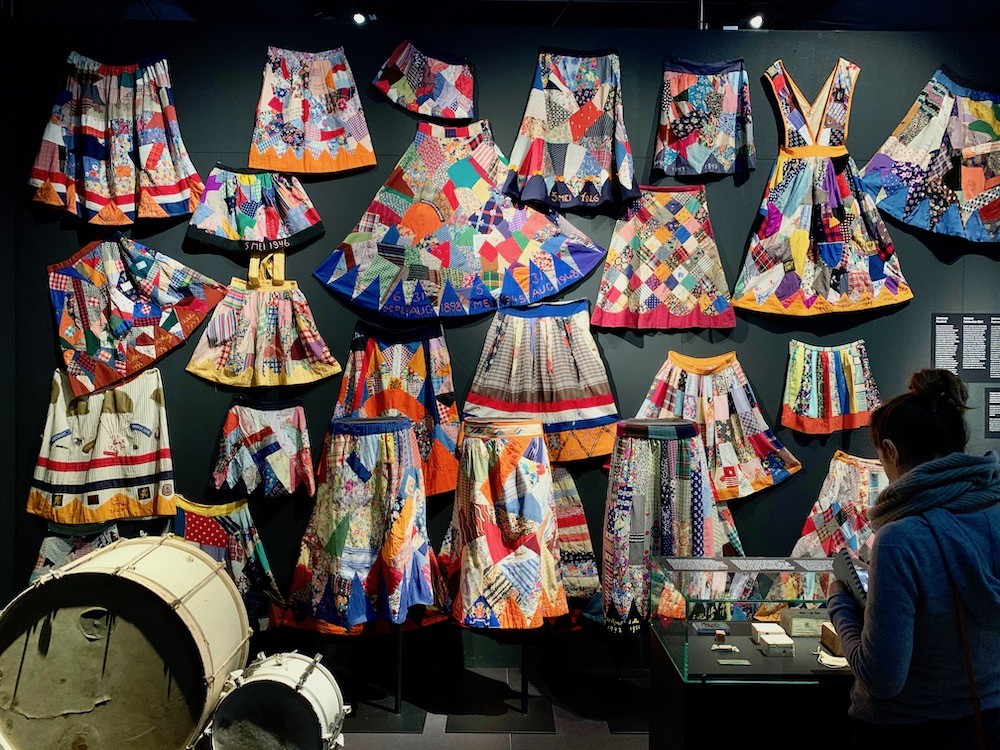
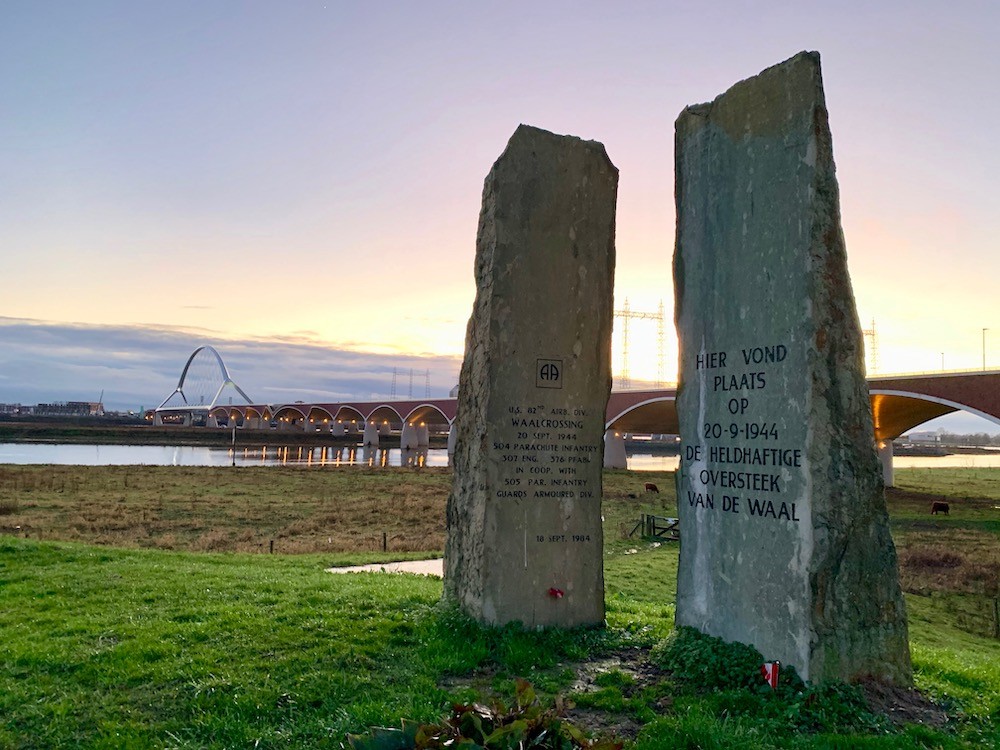
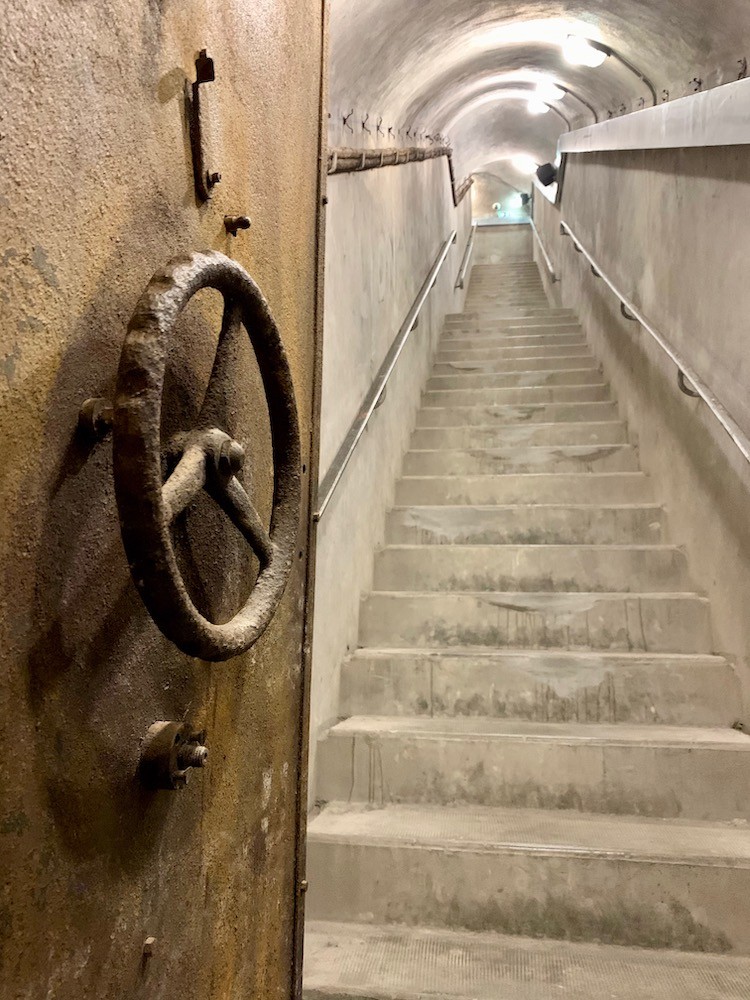
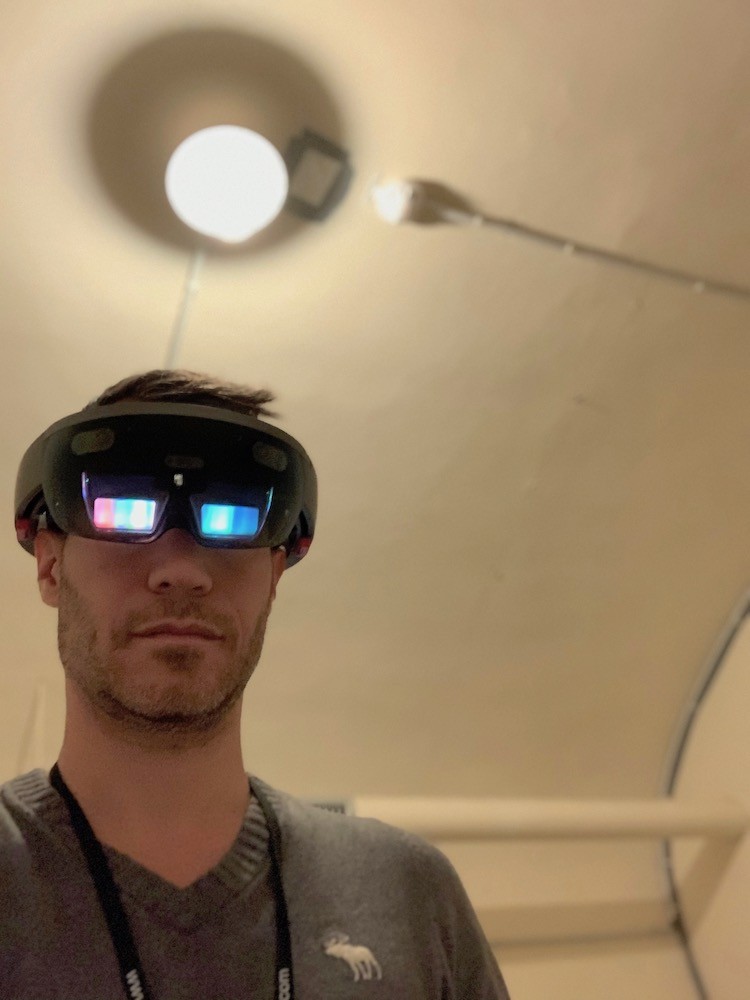

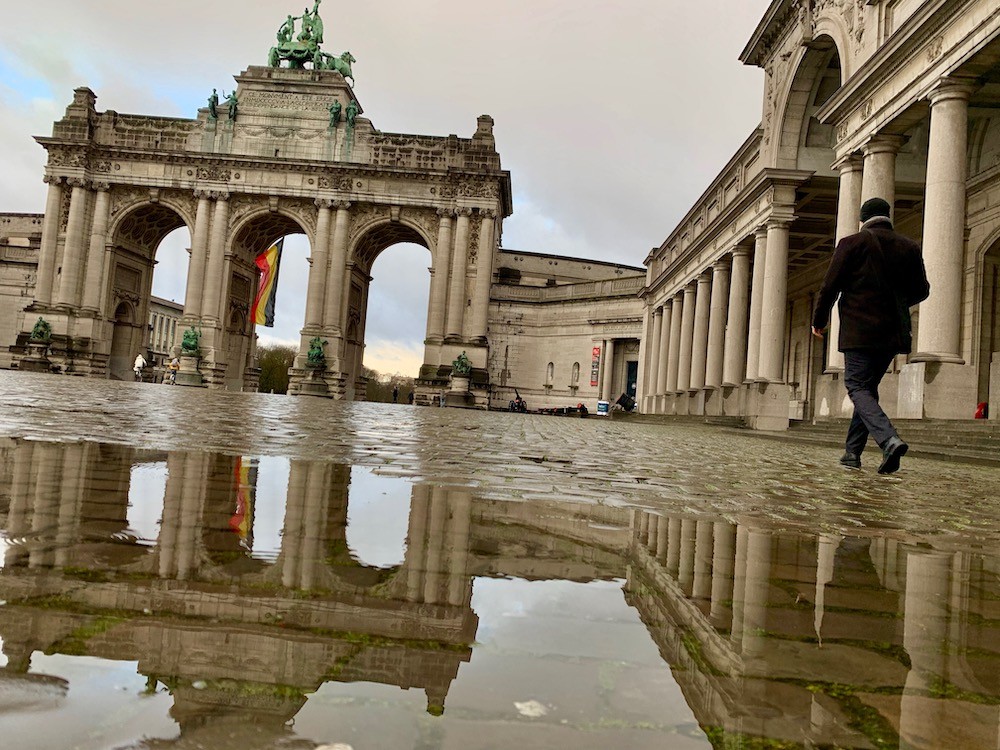
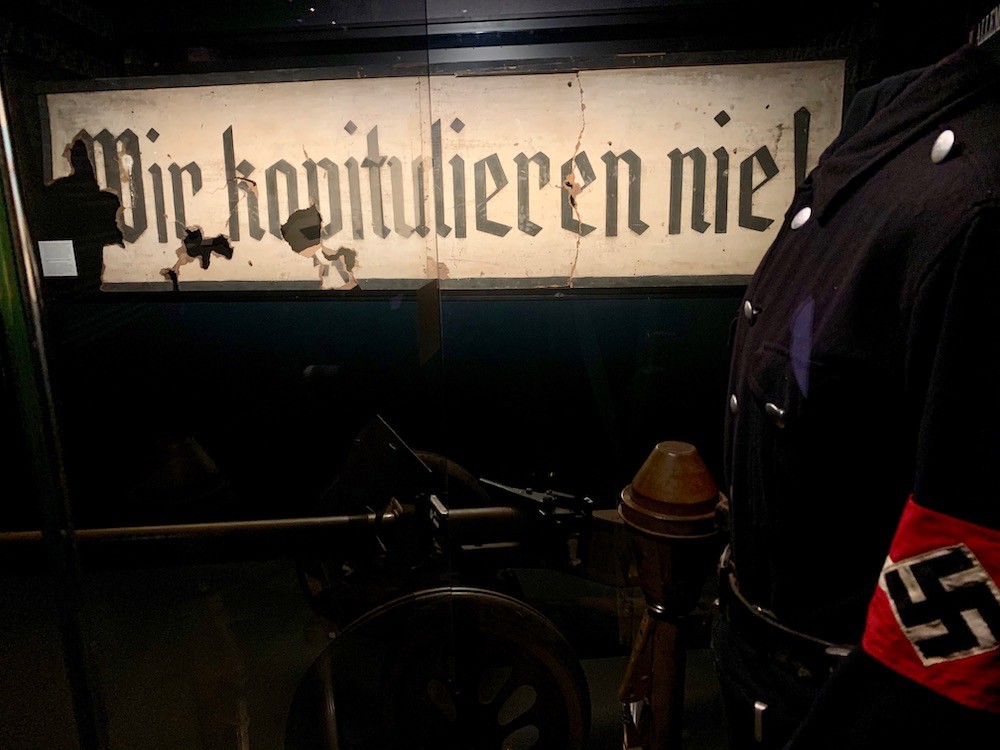
History is not always black and white
Certain things are indisputable. The Nazis committed some of the most abhorrent crimes against humanity the world has ever seen and this can never be forgotten. But what’s also interesting to see is how museums and places of memorial tackle the more nuanced aspects of war, the greyer areas between good and evil. The Overloon War Museum, for instance, confronts its visitors with the question of conscience: would you cooperate with the occupier or die for your ideals?
At the war cemetery in Ysselsteyn (about 50 km south of Nijmegen), which at almost 30 hectares is the largest German war cemetery in the world, there are around 32,000 graves, including many Dutchmen who fought for the Germans. But amongst the burials there are also 1,400 child soldiers. Did they have a choice?
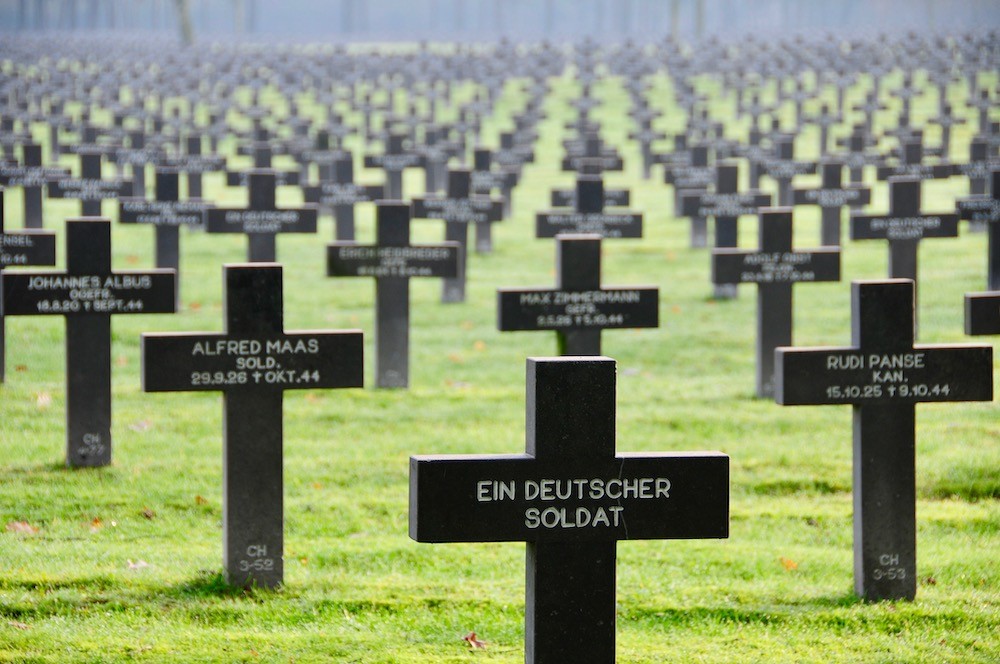
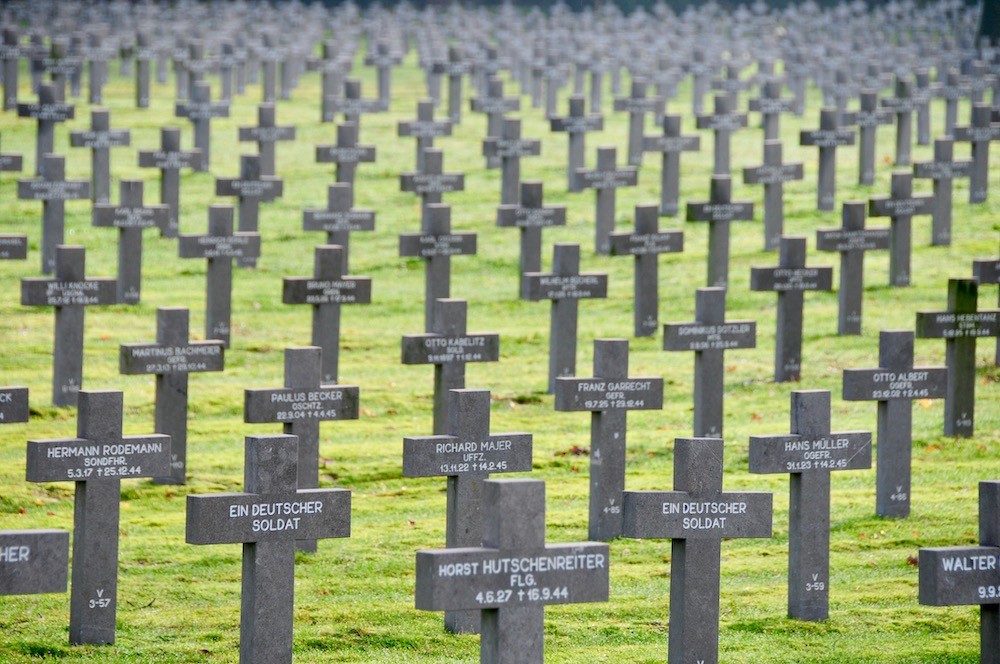

By listening to everyone’s stories – from soldiers to Holocaust survivors, prisoners of war to forced labourers, resistance fighters to ordinary civilians – you begin to develop a deeper, more multifaceted picture of what happened.
Jurriaan de Mol, the Dutch director of Liberation Route Europe, knows this well. “My father Nico was arrested during a raid in Rotterdam and transported to Hamburg as a forced labourer. He managed to flee the camp during an RAF bombing and wandered through enemy territory for days before his hunger forced him to knock on a German farmer’s door. The farmer, Albert Macke, only had one arm, having lost the other at Stalingrad. But he didn’t hesitate from letting my father in and together they made it through the winter. This experience created a friendship that lasted over 30 years…’’
The Nuremberg Trials
For the Nazis, Nuremberg was highly symbolic and the city is to some extent still associated with its Nazi past. It was one of Hitler’s favourite towns, with perfectly preserved architecture – the medieval capital of Germany with immense political significance. It was, for the Nazis, the ideal place to show off Germany’s greatness.
But it was also in Nuremberg, in Courtroom 600 of the city’s Palace of Justice, that 24 of the most prominent Nazi officials stood trial in front of an international panel of judges. Held between November 1945 and October 1946, the trials sought to bring justice to those who had planned or carried out the Nazis’ many war crimes, most notably the Holocaust, and eventually 10 of the men were executed.
Nuremberg was selected as the site for the trials, as nowhere else in Germany could the Allies find a courthouse and prison of sufficient size and intactness. What’s more, many of the men on trial had been captured in the American occupation zone, where Nuremberg was located, as they had fled from what they believed would be inhumane Soviet reprisals.
“The interest in this place has grown enormously in the last 30 years,” explains director Henrike Claussen. “The more the International Court of Justice in The Hague has hit the headlines over the years, the more visitors have came here.” The courtroom, which remained in use all the way up until February 2020, is now a museum dedicated to a pivotal moment in world history, and visitors can learn about the war criminals, the trials and the impact they’ve had to the present day.
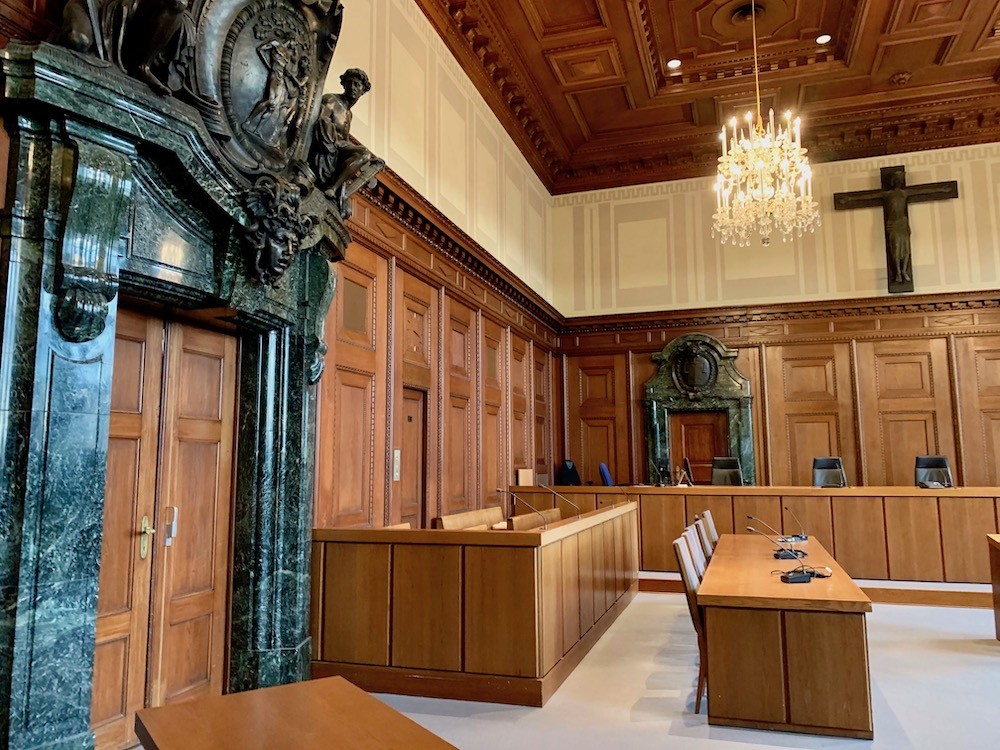
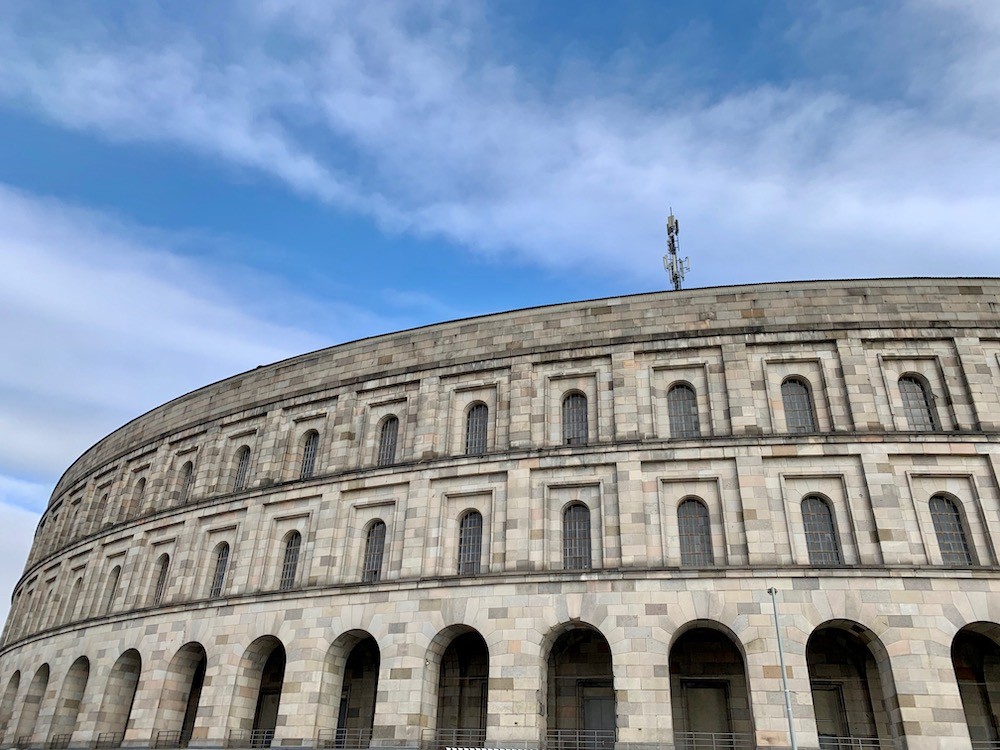
Besides the courthouse, visitors also flock in large numbers to the Nazi Party rally grounds, a huge area in the city’s southern suburbs. You can still see the huge limestone grandstand from which Hitler held his speeches during Nazi Party rallies, as well as the Congress Hall and the Great Road. “It’s quite a burden for the city, really. For a long time, nobody knew what to do with it,” says our guide Werner. “It cost us €70 million to restore, but we can’t really use it.” Despite the cost, the city of course recognises the site’s historical significance and preserves it for future generations. “It helps us demonstrate the power of propaganda,” says Werner.
The last battle
Scattered across Berlin, many places still bear the marks of the final battle of WWII in Europe, the Battle of Berlin. But after intense fighting, on May 8, 1945, in a former officers’ mess, the German High Command signed the nation’s unconditional surrender. The building now houses the German-Russian Museum, with a permanent exhibition that documents the war of conquest and annihilation that the Reich had waged against the Soviet Union since June 22, 1941.
Another site well worth a visit is the Soviet War Memorial in Berlin’s Treptower Park. The largest war memorial in Germany, it is dedicated to the approximately 80,000 Soviet soldiers who lost their lives when Berlin was captured. You can also visit the Allied Museum in Berlin to learn more about the history of the Western powers in Berlin.
Starting in the heart of Berlin, the “Soviets in Berlin – The Final Battle & The Beginning of a New Era” tour by Berlins Taiga follows the path of the Red Army in the final battle for Berlin. Stop at the Reichstag, the Soviet War Memorials in Tiergarten and Treptower Park, the former location of the Reich Chancellery and the German-Russian Museum in east Berlin.

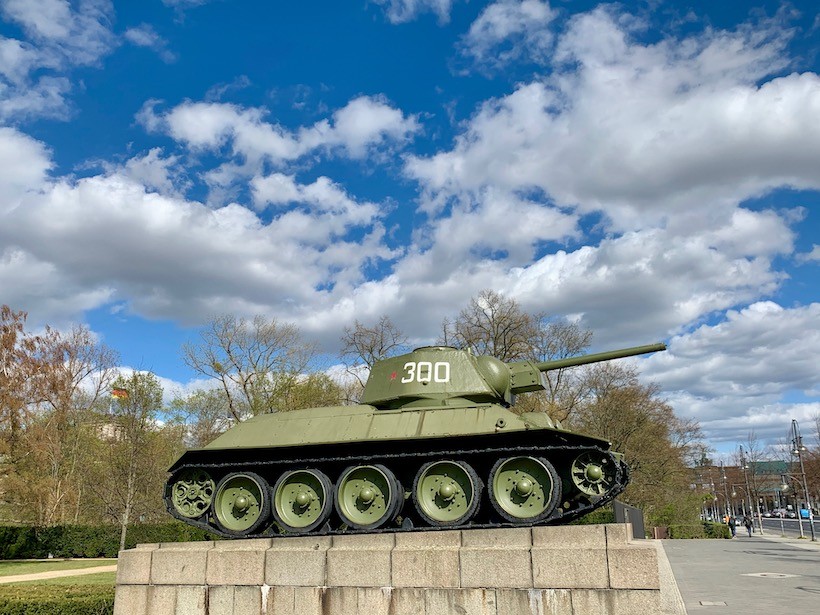
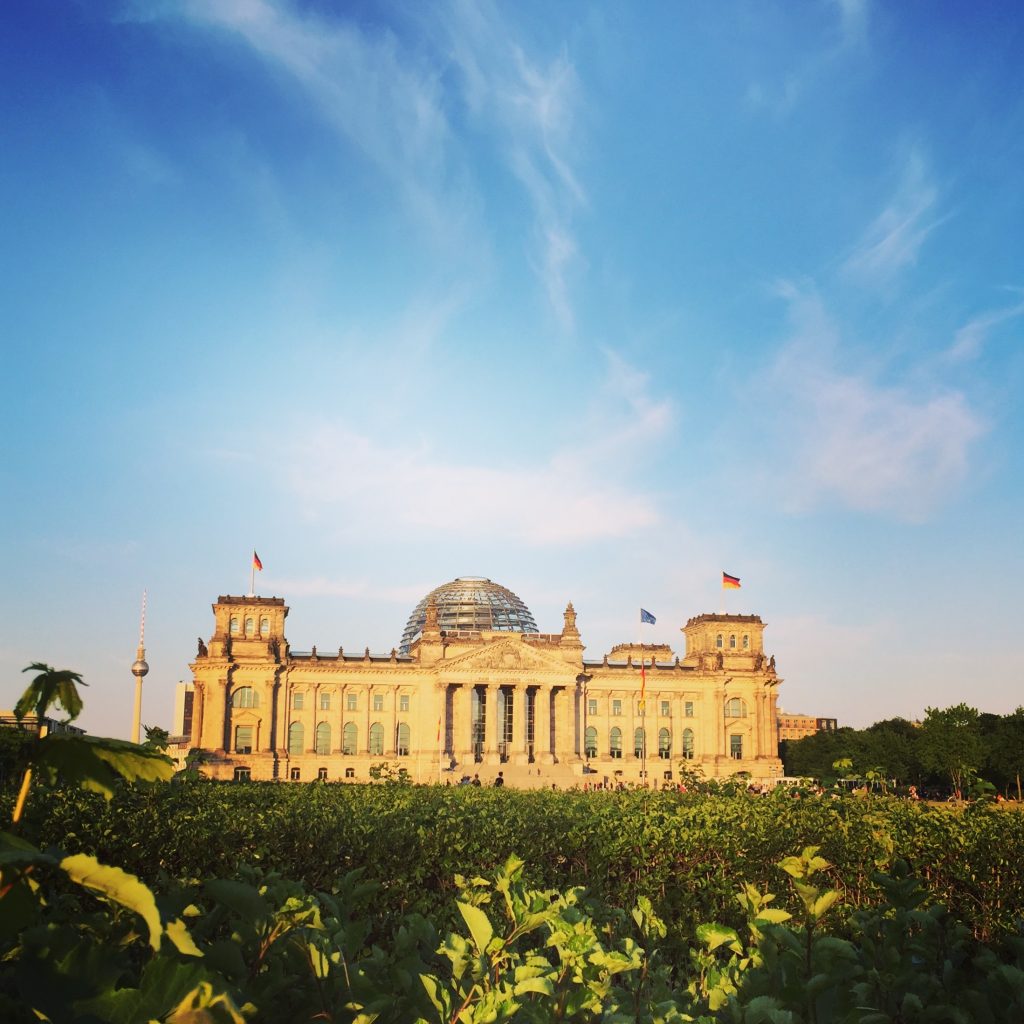
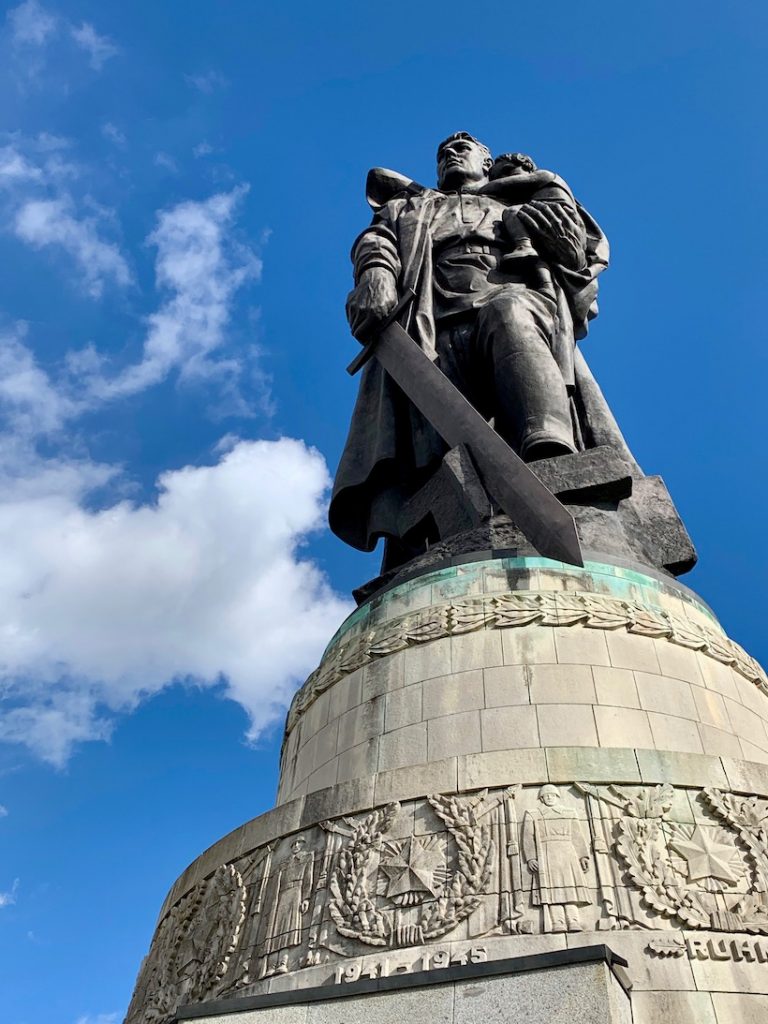
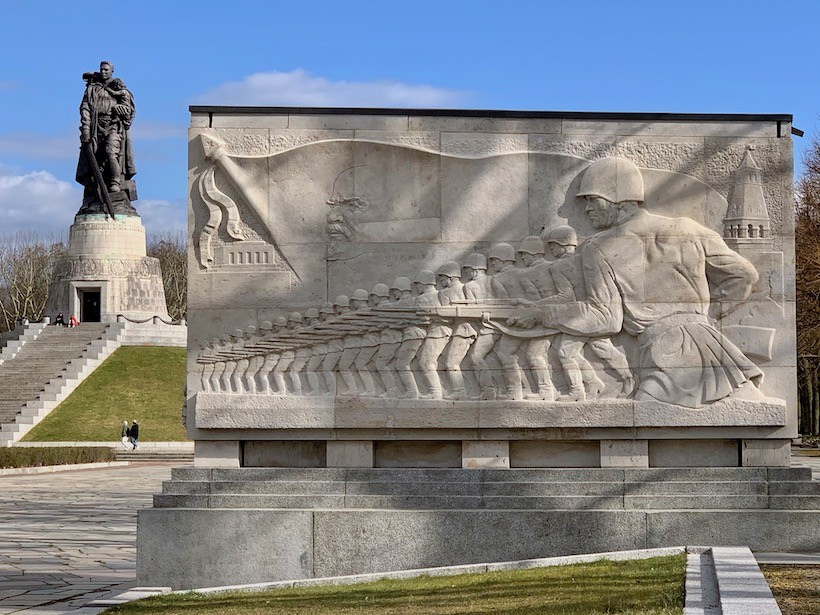
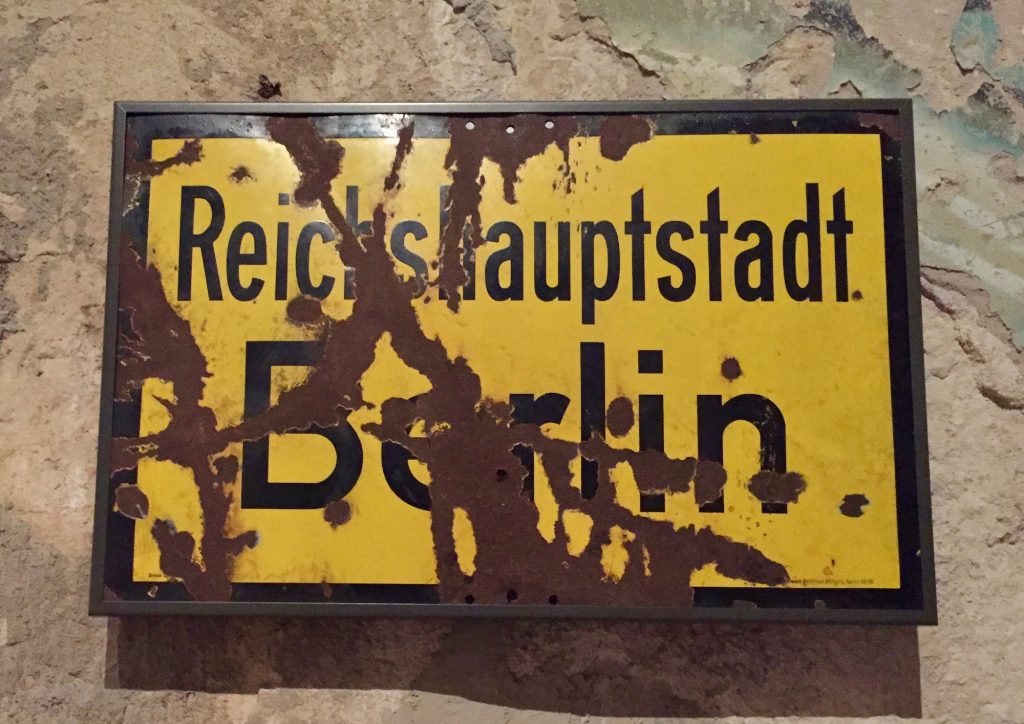
Train times
| Route | Duration | Type of connection |
|---|---|---|
| Caen (Normandy) ↓ Paris | 2:00 hrs | Direct connection by regional train |
| Paris ↓ Brussels | 1:25 hrs | Direct connection by Thalys high speed train (reservation compulsory) |
| Brussels ↓ Nijmegen / Arnhem | 3:00 hrs | (Inter)national Intercity trains, 1 change in Breda |
| Arnhem ↓ Nuremberg | 5:21 hrs | ICE high speed trains, 1 change in Duisburg or Cologne |
| Nuremberg ↓ Berlin | 3:00 hrs | Direct connection by ICE high speed train |

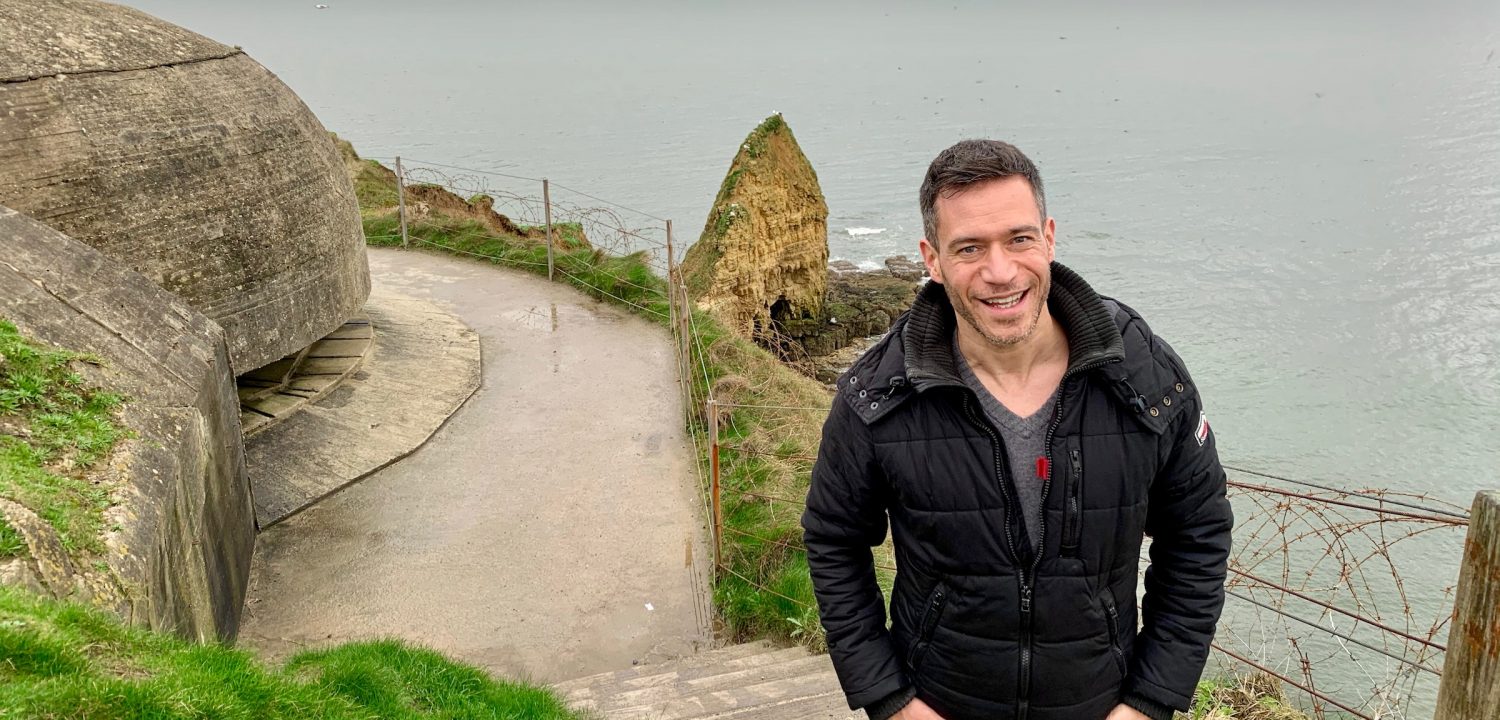
Leave a Comment